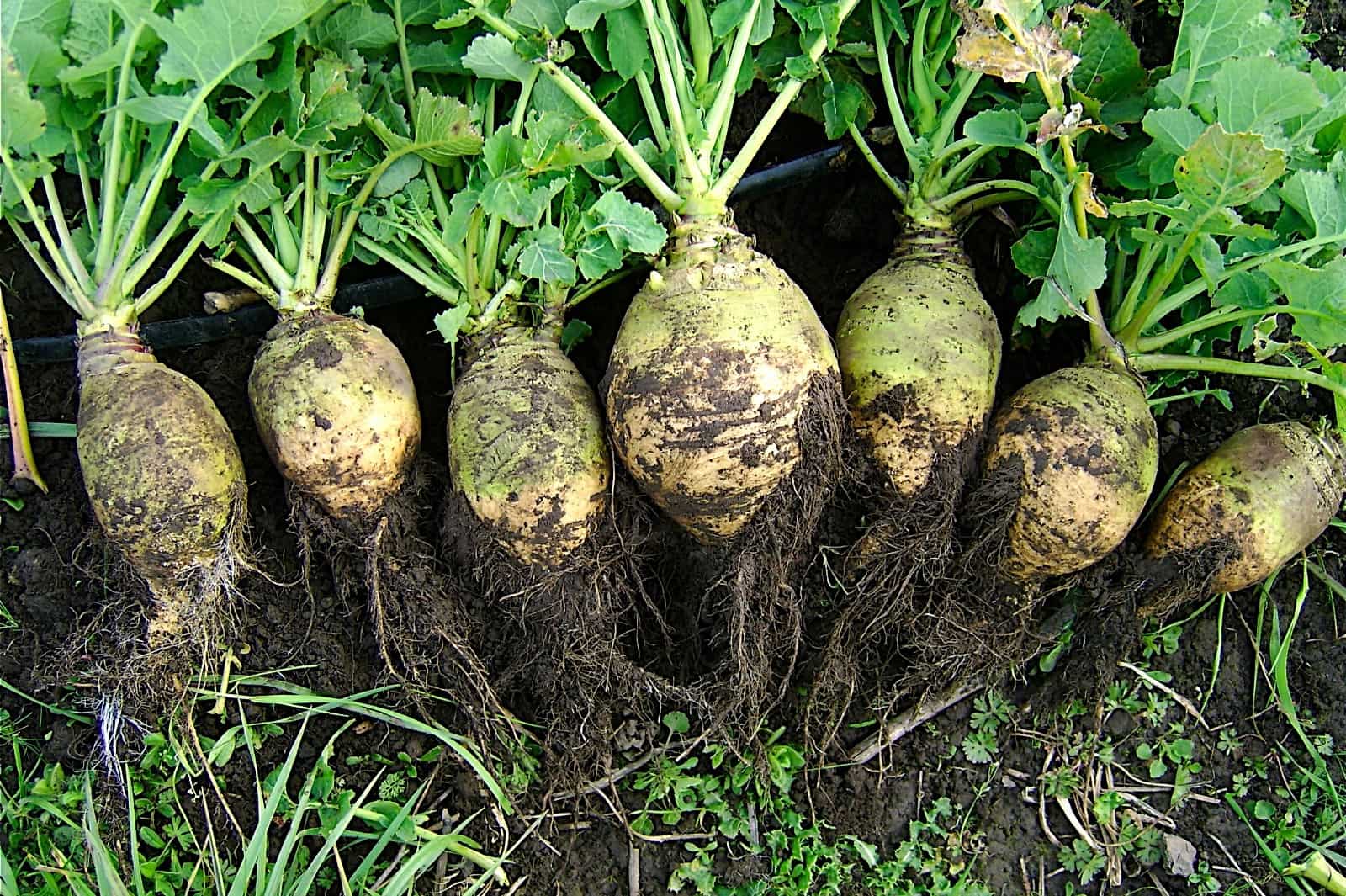
Rutabagas might not be the first vegetable that comes to mind, but they have a fascinating history and unique qualities. This root vegetable, often confused with turnips, offers a mix of flavors and nutrients that can surprise you. Originating from a cross between cabbage and turnip, rutabagas have been a staple in many cultures for centuries. They’re packed with vitamins, minerals, and fiber, making them a healthy addition to any meal. Whether roasted, mashed, or added to soups, rutabagas bring a delightful twist to your dishes. Ready to learn more? Here are 25 facts about this underrated veggie!
Key Takeaways:
- Rutabagas, also known as swedes or neeps, are nutritious root vegetables with a unique flavor. They are rich in vitamin C, fiber, and potassium, making them a healthy and versatile ingredient for delicious dishes.
- Rutabagas have a fascinating history and can be grown easily in a garden. They are a great addition to fall and winter meals, offering a sweet and earthy taste that can be enjoyed in various culinary creations.
What is a Rutabaga?
Rutabagas, also known as swedes or neeps, are root vegetables that often get overlooked. They are a cross between cabbage and turnips, offering a unique flavor and numerous health benefits. Let's dig into some fascinating facts about this humble veggie.
-
Rutabagas belong to the Brassica family, which includes cabbage, broccoli, and kale.
-
They are thought to have originated in Scandinavia or Russia during the 17th century.
-
The name "rutabaga" comes from the Swedish word "rotabagge," meaning "root bag."
-
Rutabagas are often confused with turnips, but they are larger and have a yellowish flesh compared to the white flesh of turnips.
-
They are biennial plants, meaning they take two years to complete their life cycle.
Nutritional Benefits of Rutabaga
Rutabagas are packed with nutrients that can benefit your health in various ways. Here are some key nutritional facts.
-
One cup of rutabaga provides about 50 calories, making it a low-calorie food.
-
They are rich in vitamin C, offering about 53% of the daily recommended intake per cup.
-
Rutabagas contain significant amounts of fiber, which aids in digestion and helps maintain a healthy gut.
-
They are a good source of potassium, which is essential for heart health and muscle function.
-
Rutabagas also provide small amounts of calcium, magnesium, and vitamin E.
Culinary Uses of Rutabaga
Rutabagas can be prepared in numerous delicious ways. Here are some interesting culinary facts.
-
They can be roasted, mashed, boiled, or even eaten raw in salads.
-
In Scotland, rutabagas are traditionally served with haggis during Burns Night celebrations.
-
They are a key ingredient in the Scandinavian dish "rotmos," a mashed mixture of rutabaga and potatoes.
-
Rutabaga greens are edible and can be cooked like other leafy greens.
-
They can be used as a substitute for potatoes in many recipes, offering a slightly sweeter flavor.
Growing Rutabaga
If you're interested in gardening, rutabagas are relatively easy to grow. Here are some facts about cultivating them.
-
Rutabagas prefer cool weather and are typically planted in late summer for a fall harvest.
-
They require well-drained soil and full sun to thrive.
-
It takes about 90 to 120 days for rutabagas to mature from seed to harvest.
-
They are relatively pest-resistant but can be affected by root maggots and clubroot.
-
Rutabagas can be stored for several months in a cool, dark place, making them a great winter vegetable.
Fun and Historical Facts About Rutabaga
Rutabagas have an interesting history and some fun trivia associated with them. Here are a few more facts.
-
During World War I, rutabagas became a staple food in Germany due to food shortages, leading to the term "turnip winter."
-
In the United States, rutabagas are often used in Halloween traditions, such as carving them into lanterns.
-
They are sometimes called "yellow turnips" in parts of the United States.
-
Rutabagas were introduced to North America by European settlers in the 19th century.
-
They are often used as animal feed, particularly for livestock during the winter months.
Rutabagas: More Than Meets the Eye
Rutabagas aren't just another root vegetable. Packed with vitamins, minerals, and fiber, they offer a nutritious punch. Their unique flavor makes them a versatile addition to many dishes, from soups to salads. Plus, they're low in calories, making them a great option for those watching their weight.
Beyond the kitchen, rutabagas have a rich history and cultural significance. They've been a staple in many countries for centuries, used not just for food but also in festivals and traditions. Whether you're a seasoned cook or just starting out, incorporating rutabagas into your meals can add both flavor and nutrition. So next time you're at the grocery store, give this humble vegetable a try. You might just find a new favorite ingredient!
Frequently Asked Questions
Was this page helpful?
Our commitment to delivering trustworthy and engaging content is at the heart of what we do. Each fact on our site is contributed by real users like you, bringing a wealth of diverse insights and information. To ensure the highest standards of accuracy and reliability, our dedicated editors meticulously review each submission. This process guarantees that the facts we share are not only fascinating but also credible. Trust in our commitment to quality and authenticity as you explore and learn with us.


